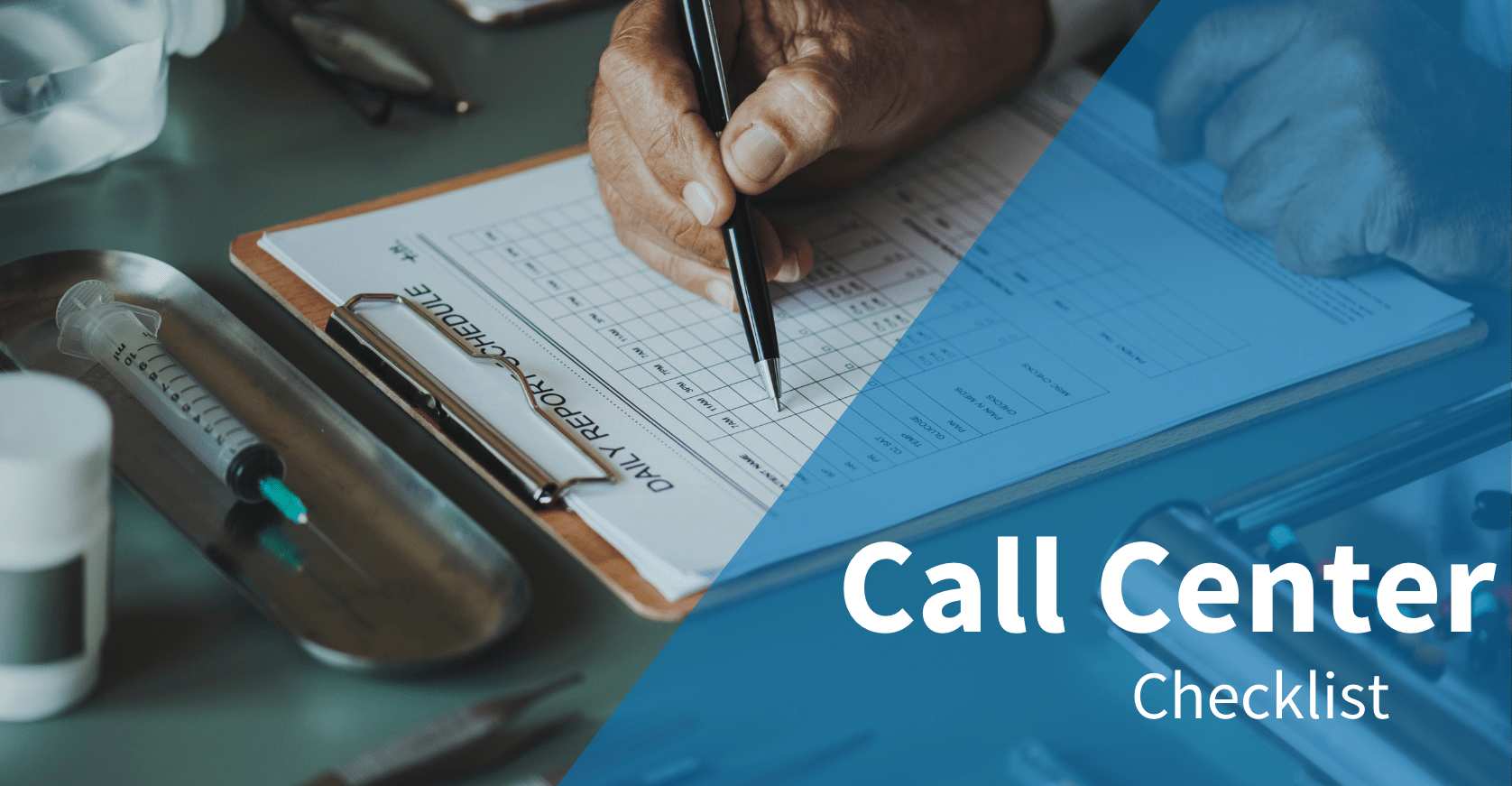[Checklist] How to Set Up a Call Center

A call center is a big investment and a huge commitment for a business. Because of that, our customers often ask for our expertise on setting up a call center. We’re always here to help. While the process has become more streamlined as the industry, technology and market has grown, there are still a few key items that new call center owners need to keep in mind. The follow steps are ones that we share with our customers everyday and are essential to setting up a productive and successful call center.
Setting Up a Contact Center
Call centers, contact centers, reservation centers, customer service centers … the names go on and on, but all those names reflect a basic need to provide a structured contact system for customers. A call center is an investment, not only financially, but also time. The business commitment to set up a contact center involves research, planning, technology, execution, and measurement. While the process becomes more streamlined as the industry, technology and market grows, there are key fundamentals to consider when setting up a call center.
Call Center Setup Requirements Checklist
Getting ready to set up your call center is no easy task, and takes some serious prep in order to make sure everything rolls out smoothly. Whether you have questions on call center infrastructure setup, call center hardware and software requirements, or just want a general call center setup checklist, here are some important steps you can take to ensure your contact center setup goes as planned.
Set Business Goals and Objectives
Determining what you want your contact center to achieve for your organization makes all the difference to a successful call center setup plan.
Are you generating sales? Need agents to call out to prospective customers? Setting appointments? Those are functions of an outbound call center. Are you responding to customer inquiries? Taking fulfillment orders on the phone? Setting up reservations for guests? Providing a help desk service? Inbound call centers have specific requirements to ensure customer satisfaction. A blended call center combines the aspects of outbound calling functions and inbound calling requirements.
Once you determine the goal, then you ascertain if there are any secondary objectives or business goals. Establishing these goals and objectives is critical to success and to gauging that success in the future.
Determine Your Needs: Physical vs Virtual Contact Centers
Do you have the resources for a physical call center with in-house agents, or will your business benefit more from a virtual call center setup with remote agents? If you decide to choose a physical call center, will you need one or multiple locations? Be sure to assess your call center hardware and software requirements and compare pricing for purchase, installation, and ongoing maintenance.
A virtual call center helps mitigate costs as there is no hardware to purchase. Your agents only require a computer and a headset. You only need to ensure adequate Internet connectivity. Determine your bandwidth requirements by doing a little math.
Generally, you need from 85-100 kpbs of bandwidth per concurrent call.
The added bonus to virtual call centers is that your provider handles ongoing maintenance and software updates - freeing up bottom-line dollars to invest in top-line revenue.
Pinpoint Any Operational Parameters or Constraints
Before you begin to physically set up the call center, you want to examine your existing phone system. Is integration possible with what you are planning or do you need to upgrade your entire system? It is also important to understand the clientele that will call the center as this influences the call center choices.
Select virtual call center platforms easily integrate into established on-premise systems. You gain the benefit of a cloud-based setup while maintaining the on-premise functions you desire.
Set a Budget Early On
It is important to establish parameters regarding minimum and maximum expenditures very early into the call center setup project. This determines key factors, such as how many agents to hire and what kind of telephony solutions to use.
Differentiate between initial setup expenses and ongoing operating costs. Outbound call centers will generate revenue in the form of leads and sales. Inbound call centers, however, have a more tenuous link between operation and profit. Common metrics to access effectiveness typically revolve around customer satisfaction scores.
Hire the Best Team for Your Goals
If the goal of your call center is to generate sales, then the best team would be a strong sales team, with some backup customer service support. You will want the 'voice' of your company to sound educated, polite, positive, and be fluent in whichever language your customers speak.
Good applicants are attentive, organized, and eager to learn. If you select your agents meticulously, you will create a company culture that fosters dedication, initiative and teamwork.
Train Your Team For Any Potential Situations
It is crucial your agents have a comprehensive understanding of your business, product and call center operations. To remain competitive, you need to train them on the latest technology, call center etiquette and customer service strategies.
To cultivate a knowledgable workforce, provide hands-on training using real-life scenarios, videos and previous call recordings. One thing you must do as a manager is proactive - hold scheduled training to update employees on new methods and technologies in the contact center world.
Choose Relevant KPI's
Identify the key performance indicators required to evaluate your call centers efficiency, speed, and quality of service. These indicators highlight both individual and team performance and allow you to make data-driven decisions to improve customer satisfaction and increase revenue. You can also use call center scorecards to help gauge how well your employees are performing.
Additionally, if you establish your KPIs during the planning process, you can train your new hires based on the performance outcomes you expect. Your agents begin with solid training and an understanding of the metrics and how they achieve success.
Finalize a Disaster Recovery Plan
A disaster recovery plan is an essential part of a call center. Having this in place helps minimize the impact of disruptions to the network, information systems, and employees of your call center. It is essential to document and periodically test the recovery plan to analyze systems, infrastructure, and train agents on the steps to take should unplanned disruptions occur.
Determine whether or not your business requirements need a call center solution that allows employees remote access. Virtual call centers typically allow remote agent set up easily. That function can factor into your disaster recovery planning.
Promote the Call Center to Other Employees
Make sure the rest of the employees within the company understand what’s happening within the call center, and what functions the call center representatives will perform. If some employees need to coordinate with the agents to receive leads or update customer information, make sure they receive the proper training and tools to do so.
Evaluate Your Call Center's Success
After a few months of operation, it is important you evaluate your call center. How is it performing against your established metrics? You can do this using the KPI's previously identified. Periodic evaluations help you monitor customer service quality and overall productivity, and the evaluations serve as a guide to continuously improve performance.
